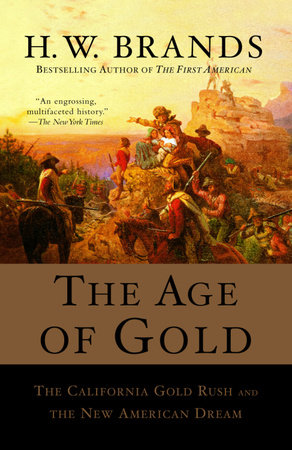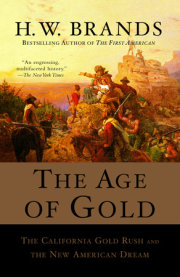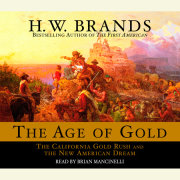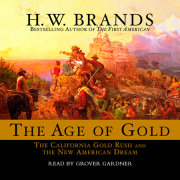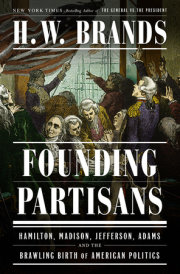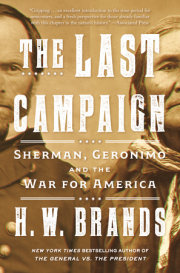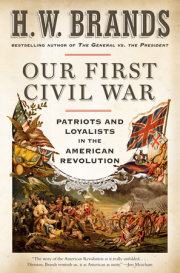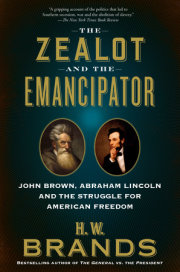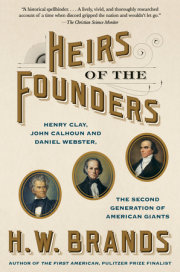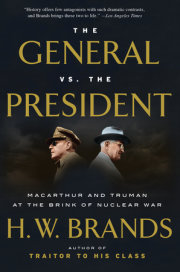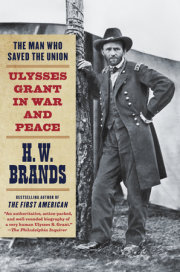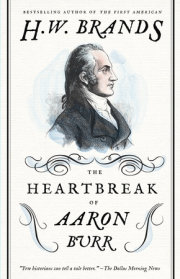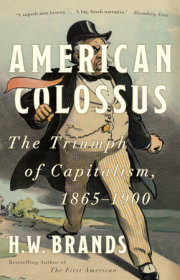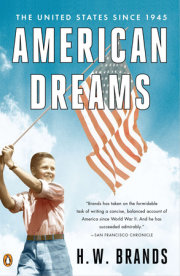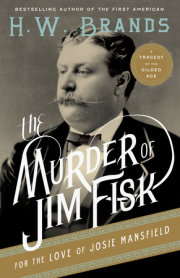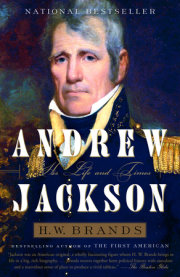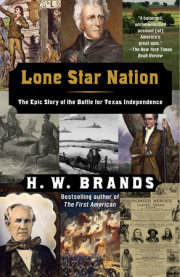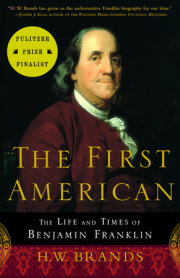1
In the Footsteps of Father Serra
A less likely terminus of all these journeys could scarcely have been conceived. A principal attraction of California in the period before Coloma was that it was so far off the beaten track. John Sutter could hide there from his wife and creditors; James Marshall could hope to shake the failure that had dogged his steps since Missouri. At a time when long-distance travel averaged little faster than a man could walk--railroads were appearing in the most advanced countries, and promised to revolutionize transport, but for now they were primarily local or regional affairs--California was about as far from the centers of Western civilization as a land could be. The sea voyage around South America from New York or Liverpool or Le Havre required five or six months, depending on conditions off Cape Horn, which could terrify the most hardened unbeliever to prayer. Recently, intrepid and lightly laden travelers had begun to attempt the Central American isthmus, but the justifiably dreaded Chagres fever and the uncertain connections to vessels on the Pacific side deterred many who otherwise would have employed this shortcut. For those setting out from the American East, travel by foot or wagon was feasible, but hardly attractive. Since the early 1840s emigrants had been crossing the plains and mountains to Oregon; the journey required half a year and all the fortitude and stamina ordinary folks could muster. And it was essentially one-way: when people left for Oregon, they might as well have dropped off the face of the earth for all their relatives were likely to see them again. The trail to California was much less traveled, and far less certain, than that to Oregon.
In the time before Coloma, those few outsiders who did visit California fell into a small number of discrete categories. European explorers arrived in the sixteenth century. Spain's Juan Cabrillo in 1542 sighted the coast of Alta California--as distinct from peninsular Baja California--but promptly sailed away. The English sea dog Francis Drake scouted California in 1579, landing at some bay never since clearly identified, but probably Drake's Bay, below Point Reyes, and burying a plaque never since found, but staking England's claim to the region. Subsequently Russian ship captains, seeking provisions for their country's Bering Sea fur hunters, began appearing in the neighborhood north of San Francisco Bay.
The English and Russians eventually awoke the Spanish, who already controlled most of the territory from Tierra del Fuego to Mexico, to the wisdom of colonizing California. The Spanish monarchy in the late eighteenth century enlisted the padres of the Franciscan order, who set out to secure California for the king of Spain even as they secured the souls of California's inhabitants for the King of Heaven.
Junipero Serra, the Majorca-born missionary who headed the effort, and his small band of Franciscan followers built a chain of missions from San Diego in the south to San Rafael in the north. The missions were located a day's walk apart, typically near the mouths of the short rivers that ran from the coastal mountains to the sea. Each mission centered on a chapel, usually built of adobe but occasionally of stone. Adjacent to the chapel was the home of the resident priests (typically two per mission) and assorted other structures. Surrounding the mission proper was a large tract of land, a hundred square miles or more. In time the mission lands supported great herds of cattle and horses and flocks of sheep. Grain fields, vegetable gardens, and fruit orchards rounded out the farms.
Besides the missions, which were controlled by the Franciscans, were four presidios, at San Diego, Santa Barbara, Monterey, and San Francisco. These forts barracked soldiers of the Spanish army, who were assigned to protect the missions and inspire awe in the local Indians. The Indians were encouraged by this means to seek refuge in the vineyards of the Lord and the fields of the friars.
Separate from the missions and the presidios were a handful of pueblos, or independent towns. Los Angeles was the most important of the pueblos; during the early nineteenth century it surpassed in size and economic activity all but a few of the missions.
In its heyday, the Spanish system in California constituted a pastoral empire of impressive proportions. Several of the missions boasted herds and flocks that numbered in the scores of thousands, barns bursting with grain and other produce, and the equivalent of tens of thousands of dollars in specie or precious plate. Indian "neophytes"--natives attached to the missions religiously and economically--totaled perhaps twenty thousand. They would have numbered far more if not for the introduced European diseases that ravaged the native populations even as they lent credence to the friars' assertion that repentance was in order because the end was near.
But the mission system was no stronger than the Spanish authority on which it rested, and when Mexico threw off Spanish control in the early 1820s, the California missions quickly declined. The new government of independent Mexico was republican and anticlerical; neither the power of the mission priests nor the subjection of the mission Indians sat well with those who now ruled California.
More precisely, the new regime claimed to rule California; in fact Mexican independence inaugurated an era of turbulence in California affairs. The friars preferred sabotage to secularization of the missions; they began to liquidate the herds and run down the farms. The Spanish-descended elites in California often disdained the mixed-blood mestizos of Mexico. The inhabitants of Monterey and the northern part of California fell out with the Los Angelenos of southern California. The small but growing contingent of foreigners, especially Americans, contributed a further element of restiveness and uncertainty.
Of all this, the large majority of Americans knew next to nothing until 1840, when Richard Dana published Two Years Before the Mast. Dana was heir to a tradition of distinguished Boston lawyers; his father had signed the Articles of Confederation and served fifteen years as chief justice of Massachusetts. The younger Dana was preparing for a legal career of his own when he contracted a bad case of measles. The illness especially afflicted his eyes, precluding an early return to his studies. Doctors suggested a sea voyage, perhaps a cruise to India. But the strapping young man, now returned to all but visual health, chafed at the thought of months in a deck chair; instead he chose to ship before the mast, on the brig Pilgrim, bound for the coast of California via Cape Horn.
The vessel left Boston in August 1834. After five months it reached Santa Barbara. Dana's first impression of California was decidedly unfavorable. "The hills have no large trees upon them, they having been all burnt by a great fire which swept them off about a dozen years ago, and they had not yet grown again," he wrote. "The fire was described to me by a inhabitant, as having been a very terrible and magnificent sight. The air of the whole valley was so heated that the people were obliged to leave the town and take up their quarters for several days upon the beach."
Dana's opinion of California gradually improved. He came to appreciate the climate and soil and scenery, and was fascinated by the polyglot mix of souls frequenting the coast: Polynesians, Russians, Italians, French, English. Yet he never learned to like the Californians themselves. They were "an idle, thriftless people," he said, unwilling or unable to make anything of the land they inhabited. A passenger who traveled aboard the Pilgrim from Monterey to Santa Barbara epitomized the type. Don Juan Bandini was descended from aristocrats, his family priding itself on the purity of its Spanish blood and its continuing importance in Mexico. Don Juan's father had been governor of California, and had sent his son to Mexico City for school and an introduction to the first circle of Mexican society. But misfortune and extravagance eroded the family estate, and the young Don Juan was now returning to California--"accomplished, poor, and proud, and without any office or occupation, to lead the life of most young men of the better families: dissipated and extravagant when the means are at hand; ambitious at heart, and impotent in act; often pinched for bread; keeping up an appearance of style, when their poverty is known to each half-naked Indian boy in the street, and standing in dread of every small trader and shopkeeper in the place."
Senor Bandini made a fine show. "He had a slight and elegant figure, moved gracefully, danced and waltzed beautifully, spoke good Castilian, with a pleasant and refined voice and accent, and had, throughout, the bearing of a man of birth and figure. Yet here he was, with his passage given him (as I afterward learned), for he had not the means of paying for it, and living upon the charity of our agent." He was polite to one and all, from the captain to the lowliest sailor. He tipped the steward four reals--"I dare-say the last he had in his pocket." The sight was rather touching. "I could not but feel a pity for him, especially when I saw him by the side of his fellow-passenger and townsman, a fat, coarse, vulgar, pretentious fellow of a Yankee trader, who had made money in San Diego, and was eating out the vitals of the Bandinis, fattening upon their extravagance, grinding them in their poverty; having mortgages on their lands, forestalling their cattle, and already making an inroad upon their jewels, which were their last hope."
The decadent pride of the Bandinis, as Dana interpreted it, appeared more broadly in the Californians at large. "The men are thriftless, proud, extravagant, and very much given to gaming; and the women have but little education, and a good deal of beauty, and their morality, of course, is none of the best." The Californians would hazard everything on small points of honor and were given to murderous feuds. Meanwhile they were careless of the natural wealth around them, and were apparently impervious to any notion of progress. The contrast Dana perceived between the character of the Californians and the character of California struck him with a kind of moral force. "Such are the people who inhabit a country embracing four or five hundred miles of sea-coast, with several good harbors; with fine forests in the north; the waters filled with fish, and the plains covered with thousands of herds of cattle; blessed with a climate than which there can be no better in the world; free from all manner of diseases, whether epidemic or endemic; and with a soil in which corn yields from seventy to eighty fold. In the hands of an enterprising people, what a country this might be!"
Dana's account appeared in the year America's sixth census showed the population of the United States to be just under 17 million people. To a later generation this number would seem minuscule, but to many of Dana's contemporaries it occasioned claustrophobia. America in 1840 was a land of farmers, and farmers--and their children and grandchildren--always needed more land. Since 1803, when Thomas Jefferson purchased the Louisiana territory from France, the only appreciable addition to the American patrimony had been Florida--swampy, disease-ridden Florida. The country was filling up; where would all the people live? What fields would they farm?
Adding to the worries was the dismal condition of the American economy. The previous decade had begun with the "bank war" between Nicholas Biddle, the powerful, prideful director of the Bank of the United States, and Andrew Jackson, the determined, prideful president. Jackson won the war by killing the Bank, but in doing so gravely wounded the economy. The Panic of 1837 bankrupted farmers, who saw the price of their crops fall 50 percent or more, and cast tens of thousands of laborers out on the streets and highways of America. Many headed west, as Americans had always done in times of trouble, hoping to make a new life where land was cheaper and opportunity more abundant. Yet land in 1840 wasn't as cheap as it had been when there weren't so many people trying to buy it, and opportunity was accordingly less abundant. As the economic depression continued into the new decade, it intensified demands for more land.
The demands acquired evangelical overtones. During the first half of the nineteenth century, American Protestantism--which was to say, the religion of nearly all Americans--bubbled and boiled with one reform movement after another. The "second Great Awakening" (the first having occurred during the previous century) saw people speaking in tongues and thrashing about wildly. One man jerked so violently--resisting grace, the pious said--that he broke his own neck. Camp meetings lasted weeks or months and spun off temperance crusades, abolitionist rallies, and missionary voyages. The religious ferment fostered an outlook that had no difficulty interpreting the pressure for territorial expansion in providential terms. If God had smiled on the United States of America--and almost none doubted that He had--wouldn't He want America to grow? Wouldn't He want Americans to spread their blessings into neighboring lands? And wouldn't He want this all the more, considering that the inhabitants of those neighboring lands were heathen Indians and papist Mexicans?
Of course He would--or so concluded the publicists of what came to be called Manifest Destiny, the ideology of expansion in the 1840s. This ideology was seductive, stroking the conscience of America even as it flattered America's vanity and served America's self-interest. It appealed most powerfully to the religiously minded majority of Americans, but the secular, too, could sign on, as advocates of the export of democracy. The popularity of Manifest Destiny naturally caught the attention of politicians, especially those in the Democratic party, who were hungry to regain the presidency after a surprising defeat in 1840. In 1844 the Democrats nominated James K. Polk of Tennessee on a platform promising the vigorous extension of America's frontiers westward. Looking southwest, Polk vowed to bring Texas into the Union. Looking northwest, he pledged to take all of Oregon.
Polk won the presidency and proceeded to act on his promises. As it happened, he didn't get all of Oregon (which at that time stretched to the southern border of Alaska), but, in negotiations with Britain, he got the largest and best part. Nor did he take Texas, which was annexed after Polk's election victory but before President John Tyler vacated the White House.
That didn't end the Texas story, however. Nor did it satisfy the aggressive appetite of Manifest Destiny. Although Texas had claimed independence from Mexico in 1836, the Mexican government rejected the claim and sent troops to suppress the rebellion. The Texans lost at the Alamo, but won at San Jacinto and forced the Mexicans to withdraw. Even so, Mexico refused to make peace or recognize the independence of the Texas republic. Consequently, when the United States annexed Texas in 1845, Mexico protested vehemently.
Copyright © 2002 by H. W. Brands. All rights reserved. No part of this excerpt may be reproduced or reprinted without permission in writing from the publisher.

